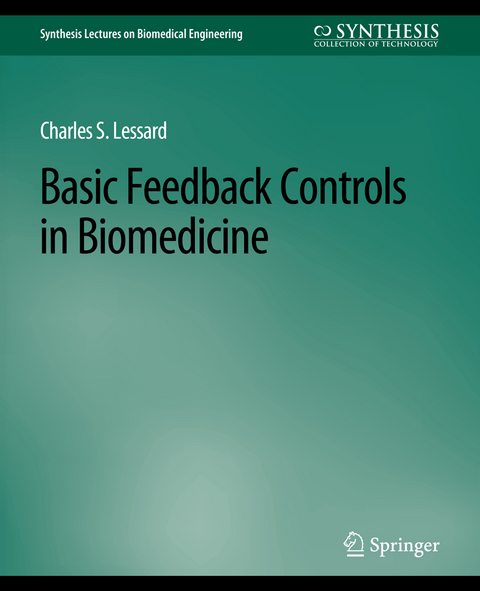
Basic Feedback Controls in Biomedicine
Springer International Publishing (Verlag)
978-3-031-00506-0 (ISBN)
Charles S. Lessard, Ph.D., Lt Colonel, United States Air Force (Retired), is an Associate Professor in the Department of Biomedical Engineering at Texas A&M University. His areas of specialization include Physiological Signal Processing, Design of Virtual Medical Instrumentation, Noninvasive Physiological Measurements, Vital Signs, Nystagmus, Sleep & Performance Decrement, Spatial Disorientation, G-induced Loss of Consciousness G-LOC). Neural Network Analysis. Dr. Lessard received a B.S. in Electrical Engineering from Texas A&M (1958) a M.S. from the U.S. Air Force Institute of Technology (1965), and Ph.D. from Marquette University (1972). As an officer in the U.S. Air Force, Lessard was a pilot of F86L Interceptors and B-52G Strategic Bombers. He also served as Research Scientist and Chief of Biomedical Engineering Research for the Aerospace Medical Division of the School of Aerospace Medicine, at Brooks Air Force Base, Texas. In this capacity he planned and directed efforts in biomedical projects associated with the Manned Orbiting Laboratory Program (MOL), developed medical instrumentation (EEG Analyzer), conducted research on computer on the analysis of sleep brainwaves and cardiac signals, and the effects of zero-gravity (0-G) on the cardiac response during valsalva maneuvers. U.S. Air Force Medical Research Laboratories, Wright-Patterson AFB, Lessard with Biocybernetics Wing Engineering and worked on neural networks, self-organizing controls (SOC), and remotely piloted vehicles. He was the Field Office Director. Program Manager, with the Electronics Systems Division of the Air Force Systems Command during the installation and testing of Spain's Automated Air Defense System as a part of the Treaty of Friendship and Cooperation between the US and Spain. Dr. Lessard retired from the U.S. Air Force in 1981 after serving as the Deputy Director Bioengineering and Biodynamic Division at Aerospace Medical Research Laboratory (AMRL), Wright-Patterson Air Forces. He began his academic career with Texas A&M University in 1981. His program management experiences are applied in his two Senior Design Courses.
Electrical System Equations.- Mechanical Translation Systems.- Mechanical Rotational Systems.- Thermal Systems and Systems Representation.- Characteristics and Types of Feedback Control Systems.- Root Locus.- Frequency Response Analysis.- Stability and Margins.- Introduction to LabVIEW.- Control Design in LabVIEW.- Simulation in LabVIEW.- LabVIEW Control Design and Simulation Exercise.- Cardiac Control.- Vestibular Control System.- Vestibulo-Ocular Control System.- Gait and Stance Control System.- Respiratory Control System.
| Erscheinungsdatum | 06.06.2022 |
|---|---|
| Reihe/Serie | Synthesis Lectures on Biomedical Engineering |
| Zusatzinfo | XI, 213 p. |
| Verlagsort | Cham |
| Sprache | englisch |
| Maße | 191 x 235 mm |
| Gewicht | 430 g |
| Themenwelt | Medizin / Pharmazie ► Physiotherapie / Ergotherapie ► Orthopädie |
| Naturwissenschaften ► Physik / Astronomie ► Angewandte Physik | |
| Technik ► Medizintechnik | |
| ISBN-10 | 3-031-00506-6 / 3031005066 |
| ISBN-13 | 978-3-031-00506-0 / 9783031005060 |
| Zustand | Neuware |
| Haben Sie eine Frage zum Produkt? |
aus dem Bereich


